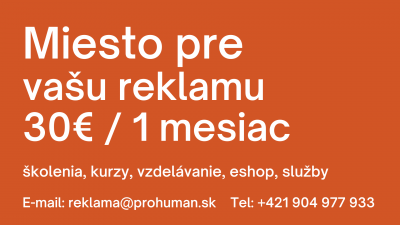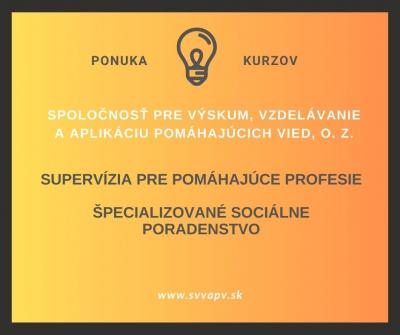Abstract: Particular challenges and barriers stand in the way of both community engagement and involvement in Slovakia. Looking more closely to a practice of community work in neighborhoods and communities (built very often by disadvantaged groups), these barriers significantly affects community development work and its function. Community organizations with their community centers play a critical role in building linkages among people and giving voice to vulnerable groups. In this paper the principles of community work in Slovakia are identified and community development challenges are analysed. Based on that, particular facilitators as potential solutions can be proposed to overcome those barriers.
Key words: community development, community centers, disadvantaged groups, civil society, community, participation, Slovakia
Introduction
Community development work and local development is an increasingly relevant policy issue in Europe. It often depends on particular region with its actors being formed by political establishment of the last century. Whereas community development is an integrated part of local and regional governments in countries of Western Europe, it is not so widespread in the new EU member states, especially in the post-communist countries. Most people in these societies still strongly mistrust and avoid joining any kind of formal organisations, even in the newly free and democratic setting (Howard, 2003).
Slovakia is still coming through the years of transition – trying to understand community work as a benefit to the local governance and the development of civil society (Střelcová, 2015). In Slovakia we observe and experience in practice several fundamental strategies of work with communities to address their issues – social service delivery, advocacy and community development. Community organizing (the fourth strategy of community work) is still very rarely used in this country even if it might be really powerful approach towards social change thanks to the organization as democratically controlled community institution (Markovič Baluchová, 2017).
The aim of this paper is to identify the principles of community work in Slovakia and to analyse community development challenges, as well as to propose particular solutions that can overcome current barriers.
Theory of community development
Different traditions of community development exist across the continents. According to International Association for Community Development (IACD, 2015), community development is „a set of practices and methods that focus on harnessing the innate abilities and potential that exist in all human communities to become active agents in their own development and to organise themselves to address key issues and concerns that they share“.
Community development process starts with disseminating information and animating the community. It follows with the identification of needs and resources, as well as with the identification and training of local leaders. Finally, it leads to the design of a plan and following evaluation procedures (Střelcová, 2015). In other words people meet together in their joint action to transform the world (‘collaboration’), leadership aims at uniting the oppressed (‘uniting for liberation’), the oppressed organise for their own action (‘organisation’) and dialogical cultural action aims at social transformation on the basis of the identification of ‘generating subjects’ (Freire, 2005). The core for the community development theory is the respect for the people’s needs and the focus on potential, not on the problems (Střelcová, 2015).
Types of work in communities or with communities
In order to analyse community work in particular groups, the distinction between the community development work and other types of work in communities has to be done. The community development can be very clearly distinguished from the service by the definition that consider the community development as a „participation model that empowers the citizens and is aimed to the increasing of the citizen’s power through the areas that influence their life and also that is supportive to the people of all ages in their active citizen“ (Guerra, 2012).
Strieženec (2001) notices that „the use of social work with community is in some cases inevitable and in some areas seems like the only acceptable form”. However, he argues, if “a good political, social, health or educative measures are not adopted by the community, they do not have a chance to meet the anticipated outcome” (Strieženec, 2001). Based on Strieženec’s conclusion, we can distinguish the main difference between social work with communities, social community work and community work in neighborhoods or community development work. That lies in the approach whether the work is done for the community as it is in the practice of social work (and therefore risk of neglecting is higher) or with the community, as it is based in the approach based on community work. Košková and Antalová (2003) notice the work “with community and for community” as a development process based on the equal partnership of all associates, that enables exchange of knowledge, experiences and skills with the aim to bring the change.
Compare to the advocacy, community development supports and employs the human capital. It enhances the process of the skills and knowledge growth of individuals, groups and the community as a whole which is an outcome of an informal learning process conditioned by the people’s activity in the community. Community development works with the potential that already exists within the community – with abilities, skills, knowledge and capacity of its habitants, association members and institution representatives (Střelcová, 2015).
The main goal of the community development is to build an active and sustainable communities, based on the social justice and mutual respect. Besides its role is to prevent and displace the barriers that disables people to participate on issues that influence their quality of life. The community development is assigned to assist individuals and the community to understand their problems, to educate and motivate the people to the self-help and independence; it supports the development of the community life (Husárik, Miková, 2012). The foundation of another type of community work – community organizing is – people with a problem who define their community and decide the problems that they wish to address; the solutions they wish to pursue; and the methods they will use to accomplish their goals (Markovič Baluchová, 2017).
Community work does not identify with social work with communities as it does not have a character of social work, but works with the potential of the community. Community development has a sense in sustainability and engages the community in the development and planning process (Henderson, Thomas, 2007).
Community participation in Slovakia
Participation is placed at the heart of community development. According to Aref and Redzuan the highest level is referred to as genuine participation which is more focused on empowerment. At this level, people from the community have power and control over the decision making process. The intermediate level is labelled as symbolic participation. At this particular level, people from the community are consulted and act as a partner in projects and programmes with regular interactions. The lowest level of community participation is referred to as non-participation. At this particular level, members from the community are just informed about plans, decisions and actions. In addition, at the non-participation level there is a degree of manipulation of the community for power and control (Aref, Redzuan, 2009). All these levels have been observed within the communities built by disadvantaged groups in Slovakia in last 15 years.
Building of collective action plays a central role in theoretical contributions coming from the field of community development. Therefore, participation, capacity building, engagement or community empowerment clearly finds their origins in these kinds of theoretical contributions. The community engagement strategy guides people on how they engage with their communities and organisations in provided services.
In Slovakia number of NGOs has multiplied geometrically, and so did the growth of third sector employment. However, in Scandinavian countries the number of NGOs is more than a three times higher (Bútora, Bútorová, Strečanský, 2012). In the period when Slovakia became independent state by separating Czechoslovak republic into two states, there were only around 6000 nongovernmental organizations in the entire country (Dudeková, 1998). This amount have arosen to more than a 32000 NGOs established in two decades later (Bútora, Bútorová, Strečanský, 2012).
Presence of Community centers for disadvantaged groups
Community centers in Slovakia, as well as in other post-communist countries of Eastern Europe are still relatively unknown and new phenomenon. First community centers have been founded in 2003 through project “Support for community center’s creation in Slovak republic.” Financed through Program Phare as a part of EU funds the centers meant a tool for integration of local Roma communities (Korpesio, 2012). In recent years there is an expansive trend in practice of centers that are aimed to support marginalized groups (Roma particularly). In general, these kinds of community centers are aimed to create the conditions to provide service of a daily center for children and family, career and employment counseling, educational activities and other supportive services. These kinds of community centers in Slovakia reached number 100 in 2012 (Korpesio, 2012). In September 2014 there were according to the National Project called Community Centers set up the standards for community centers in Slovakia (Implementing Agency for Operational Programme Employment and Social Inclusion – IA OPESI, 2014). The mission of the defined centers is clearly defined to “react to the gaps in the community development and social integration at local level”. The Standards refer to the habitants of marginalized Roma communities, unemployed, segregated and isolated groups, children and youth under the risk, socially excluded individuals or employees with low incomes and those under the poverty level and define that “the creation of the community centers in our area is mainly connected with the Roma communities” (IA OPESI, 2014).
Community work in neighborhoods has inclusive character. According to the used definition of mentioned Standards, the community work is supposed to “effect preventively on the socially disadvantaged groups of citizens, as well as to the citizens that are under the risk of social exclusion and thereby to prevent occurancy of urgent crisis situations.” Community centers are building bridges between the majority and minority in common dialogue and activities (IA OPESI, 2014).
Community center represents a space for the citizen’s meetings where these citizens can better address their ideas about the community and within and thereby contribute to the civil society building.
Challenges of community development
There are many challenges (in Slovak context mostly barriers) that can stand in the way of both community engagement and involvement. The indicated barriers (Dukeshire and Thurlow, 2002; Střelcová, 2015) to community engagement are following: 1. Low sense of belonging; 2. Poor social networks; 3. None or negative neighborhood relations; 4. Inactive street life and, little opportunities for community interaction and insufficiency of adequate and accessable public spaces; 5. Lack of access to information; 6. Conditions for living considered as bad or not adequate; 7. Low awareness of local organizations and limited associative life; 8. Limited community resources; 9. Weak or non-existing habits of volunteerism; 10. High fluctuation of residents; 11. None or little expectations connected about the neighborhood; 12. None or minimal positive changes noticed by the community members in the neighborhood; 13. Inadequate social infrastructure and services and restraints to walkability; 14. Some kind of tensions in community; 15. Lack of understanding or confusion about the role of community and neighborhood center; 16. Underestimating the value of local participation and community engagement; 17. Low personal interest about local issues, local governance and representation; 18. Lack of trust towards local representation and administration; 19. Historically negative relationships with government institutions; 20. Homogenity of neighborhood community.
Conclusion and potential solutions for future
Community development challenges we face in Slovakia are very often common for the entire CEE region. Slovak people struggle with trust both in the administrative and political representation, and in our neighbours or community members. They are also still passive in volunteer work and community organizations. In order to promote and secure sustainable communities after the analysis of current state it is important to take into account individual character of communities and needs of local citizens consisting very often of vulnerable people. For the successful community work in any community or neighborhood, the most important is the group identity and the fact it is already built and identifies itself (Střelcová, 2015).
Above mentioned 20 barriers mean limits to the community work in particular groups. All of them usually exists in vulnerable communities, at least to some extent. To move further and overcome them, a proposition of community facilitators can be a solution for future (Dukeshire, Thurlow, 2002; Střelcová, 2015). Proposed facilitators are following: 1. Incentives and positive expectations; 2. Social capital and community resources; 3. Trusted group leaders and local representatives; 4. Regularity of activities; 5. Sense of community; 6. Strengthened social networks and positive neighborhood relations; 7. Informedness; 8. Associative life; 9. Strong volunteer habits; 10. Valued local participation and community engagement.
These factors might help to build communities that could be more inclusive, cohesive, vibrant and safe. Community organizations with their community centers play a critical role in building linkages among people and groups, supporting community capacity building, and giving voice to vulnerable groups.
Author: PhDr. et RNDr. Božena Markovič Baluchová, PhD.
Department of Development and Environmental Studies, Faculty of Science, Palacky University in Olomouc
References
1. Aref, F., Redzuan, M., 2009: Assessing the level of community participation as a component of community capacity building for tourism development, Europ. J. Soc. Sc., 8 (1), 68-75 p.
2. Bútorová, Z., Bútora, M., Strečanský, B., 2012: Aktívne občianstvo a mimovládny sektor na Slovensku: Trendy a perspektívy, Bratislava: Včelí dom. 52 pp., ISBN 978-80-970885-0-7.
3. Dudeková, G., 2014: Dobrovoľné združovanie na Slovensku v minulosti. [Online: http://www.dejiny.sk/eknihy/gd.htm].
4. Dukeshire, S., Thurlow, J., 2002: Challenges and Barriers to Community Participation in Policy Development, Rural Communities Impacting Policy Project, Atlantic Health Promotion Research Centre at Dalhousie University and the Coastal Communities Network, Nova Scotia. 1-4 pp., ISBN 0-9780913-2-9.
5. Freie, P., 2005: Pedagogy of the oppressed (30th Ed), NY: Continuum, 181 p. [Online: http://www.msu.ac.zw/elearning/material/1335344125freire_pedagogy_of_the_oppresed.pdf].
6. Guerra, S., 2012: Keeping the Community Whole Unit for sustainability Sagene municiple district, District Sagene Municipality of Oslo, Norway.
7. Henderson, P., Thomas, D.N., 2007: Skills in Neighbourhood work, (Translation). Nitra: Centrum komunitního rozvoja. ISBN 978-80-969638-4-3.
8. Howard, M.M., 2003: The Weakness of Civil Society in Post-Communist Europe, Cambridge: University Press, 27 pp. [Online: http://assets.cambridge.org/97805218/12238/sample/9780521812238ws.pdf].
9. Husárik, M., Miková J., 2011: Správa o činnosti komunitného centra Sásová za obdobie apríl 2011 až december 2011, Mesto Basnká Bystrica. [Online: http://www.banskabystrica.sk/index.php?id_menu=63165].
10. Košková, Š., Antalová, I., 2003: Príručka objavovateľa stratených území, Bratislava: Nadácia Milana Šimečku, 215 p., EAN 9788089008155.
11. Markovič Baluchová, B., 2017: Presence of Community organizing in Slovak practice, Bratislava: Media about Development. [Online: https://mediaaboutdevelopment.wordpress.com/2017/04/20/presence-of-community-organizing-in-slovak-practise/].
12. Korpesio, C., 2012: Komunitné centrá na Slovensku. Bratislava: Prohuman. [Online: http://www.prohuman.sk/socialna-praca/komunitne-centra-na-slovensku].
13. Strieženec, Š., 2001: Úvod do štúdia sociálnej práce. Trnava: Tripsoft. 19 pp., ISBN 80-968294-6-7.
14. Střelcová, V., 2015: Komunitná práca v mestských susedstvách (Prípadová štúdia sídliska Sásová na Slovensku a Telheiras v Portugalsku), Bratislava: FSEV UK, Ústav verejnej politiky, 146 p.













